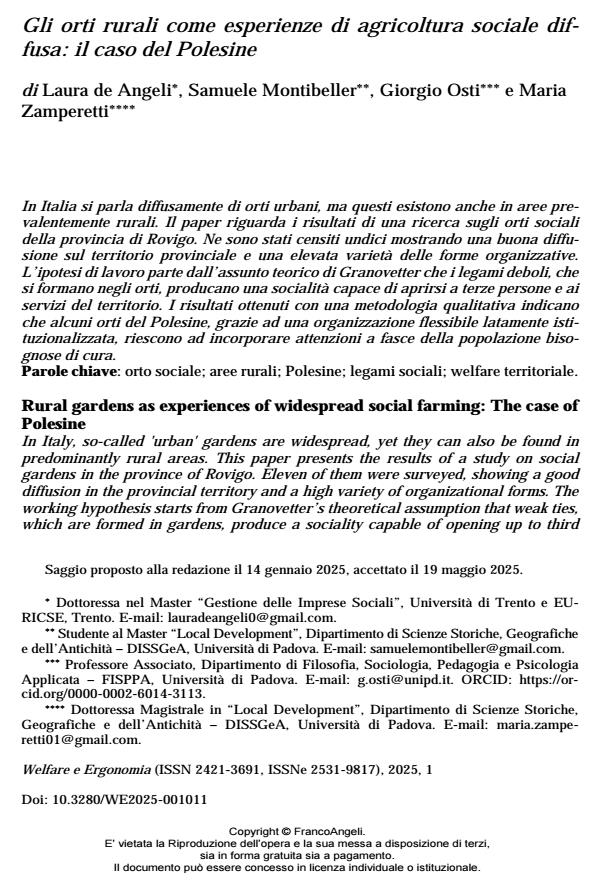Rural gardens as experiences of widespread social farming: The case of Polesine
Journal title WELFARE E ERGONOMIA
Author/s Laura de Angeli, Samuele Montibeller, Giorgio Osti, Maria Zamperetti
Publishing Year 2025 Issue 2025/1
Language Italian Pages 15 P. 191-205 File size 94 KB
DOI 10.3280/WE2025-001013
DOI is like a bar code for intellectual property: to have more infomation
click here
Below, you can see the article first page
If you want to buy this article in PDF format, you can do it, following the instructions to buy download credits

FrancoAngeli is member of Publishers International Linking Association, Inc (PILA), a not-for-profit association which run the CrossRef service enabling links to and from online scholarly content.
In Italy, so-called 'urban' gardens are widespread, yet they can also be found in predominantly rural areas. This paper presents the results of a study on social gardens in the province of Rovigo. Eleven of them were surveyed, showing a good diffusion in the provincial territory and a high variety of organizational forms. The working hypothesis starts from Granovetter’s theoretical assumption that weak ties, which are formed in gardens, produce a sociality capable of opening up to third parties and to local services. The results, obtained through a qualitative methodology, indicate that some gardens in Polesine, thanks to a flexible and subtly institutionalized organization, are able to provide care and support to vulnerable segments of the population
Keywords: social garden; rural areas; Polesine; social ties.
Laura de Angeli, Samuele Montibeller, Giorgio Osti, Maria Zamperetti, Gli orti rurali come esperienze di agricoltura sociale diffusa: il caso del Polesine in "WELFARE E ERGONOMIA" 1/2025, pp 191-205, DOI: 10.3280/WE2025-001013